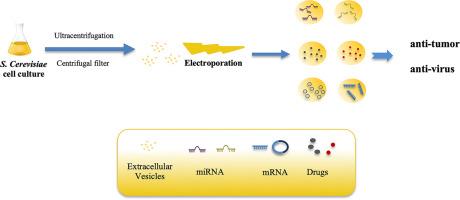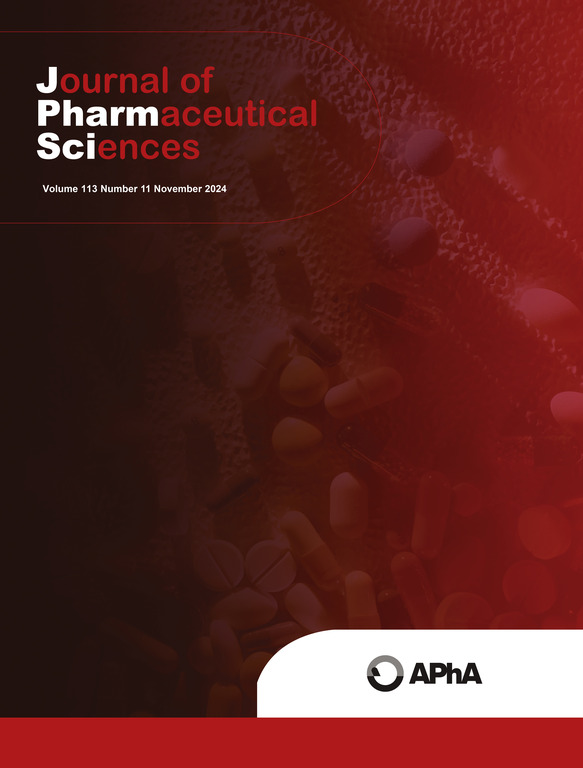Delivery of therapeutic RNA by extracellular vesicles derived from Saccharomyces cerevisiae for medicine applications
IF 3.8
3区 医学
Q2 CHEMISTRY, MEDICINAL
引用次数: 0
Abstract
Employing small extracellular vesicles (EVs) as drug delivery vehicles presents a plethora of advantages over conventional drug delivery methods, including biological compatibility, engineering versatility for targeted delivery, and biodegradability. Therefore, strategies aimed at amplifying their therapeutic potential involve developing efficient, tissue-specific, and non-immunogenic delivery approaches. Despite rapid advancements in the realm of EVs as drug delivery systems in recent years, the availability of a high-yield, reproducible, and cost-effective source for EVs production and isolation remains a limiting factor for practical application. In this study, we isolated EVs from Saccharomyces cerevisiae (S.c) and loaded them with cargoes such as hsa-miR-143 (an apoptosis-inducing miRNA) or miR-H6 (a miRNA targeting HSV-1). We demonstrated the capability of these EVs to deliver microRNAs or even large mRNA to a variety of cell types. The therapeutic potential of S.c-derived EVs (S.c-EVs) was further evidenced by their ability to inhibit tumor growth in animal models. The S.c-EVs proved to be safe and non-immunogenic in vivo. Our results suggest that Saccharomyces cerevisiae represents a cost-effective source of extracellular vesicles, serving as nanocarriers for functional drug delivery in therapeutic applications.

利用从酿酒酵母中提取的细胞外囊泡输送治疗用 RNA,并将其应用于医药领域。
与传统的给药方法相比,使用小的细胞外囊泡 (EV) 作为给药载体具有诸多优势,包括生物相容性、定向给药的工程多功能性和生物可降解性。因此,旨在扩大其治疗潜力的策略包括开发高效、组织特异性和非免疫原性的给药方法。尽管近年来将 EVs 作为药物递送系统的研究进展迅速,但高产、可重现、高成本效益的 EVs 生产和分离来源仍然是限制其实际应用的因素。在这项研究中,我们从酿酒酵母(S.c)中分离出了EVs,并在其中添加了hsa-miR-143(一种诱导细胞凋亡的miRNA)或miR-H6(一种靶向HSV-1的miRNA)等载体。我们证明了这些 EVs 能够将 microRNA 甚至大型 mRNA 运送到各种类型的细胞中。S.c-EVs在动物模型中抑制肿瘤生长的能力进一步证明了S.c-EVs的治疗潜力。事实证明,S.c-EVs 在体内安全且无免疫原性。我们的研究结果表明,酿酒酵母是一种具有成本效益的细胞外囊泡来源,可作为纳米载体用于治疗领域的功能性药物递送。
本文章由计算机程序翻译,如有差异,请以英文原文为准。
求助全文
约1分钟内获得全文
求助全文
来源期刊
CiteScore
7.30
自引率
13.20%
发文量
367
审稿时长
33 days
期刊介绍:
The Journal of Pharmaceutical Sciences will publish original research papers, original research notes, invited topical reviews (including Minireviews), and editorial commentary and news. The area of focus shall be concepts in basic pharmaceutical science and such topics as chemical processing of pharmaceuticals, including crystallization, lyophilization, chemical stability of drugs, pharmacokinetics, biopharmaceutics, pharmacodynamics, pro-drug developments, metabolic disposition of bioactive agents, dosage form design, protein-peptide chemistry and biotechnology specifically as these relate to pharmaceutical technology, and targeted drug delivery.

 求助内容:
求助内容: 应助结果提醒方式:
应助结果提醒方式:


